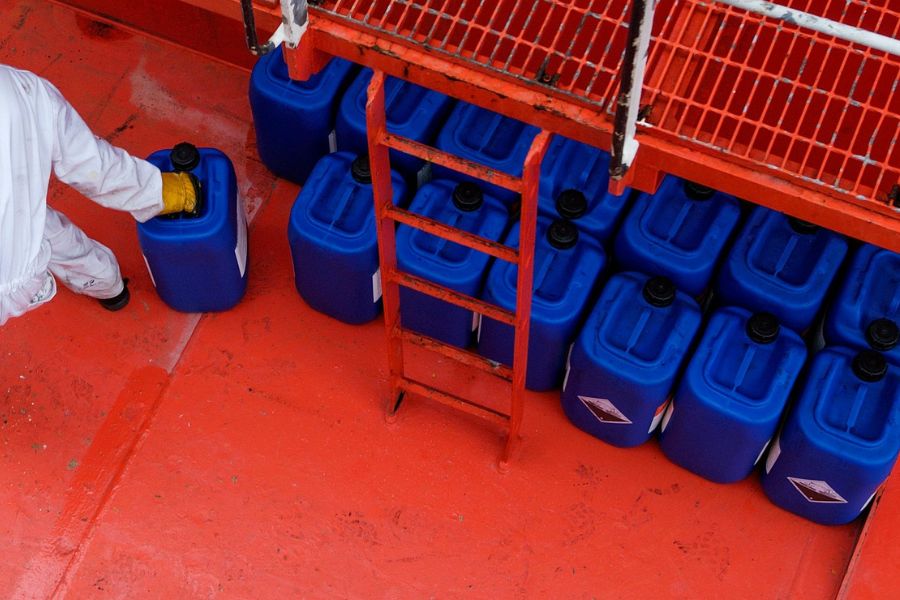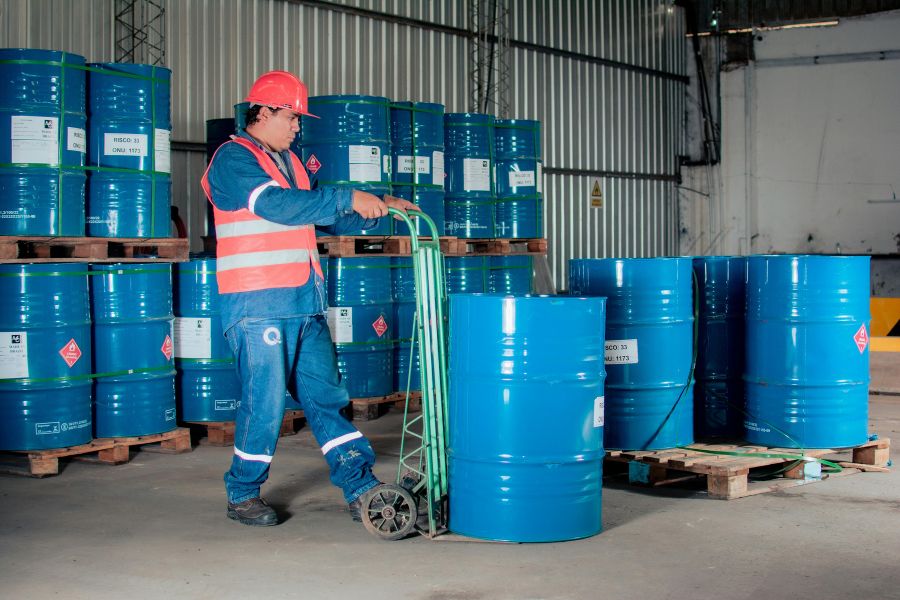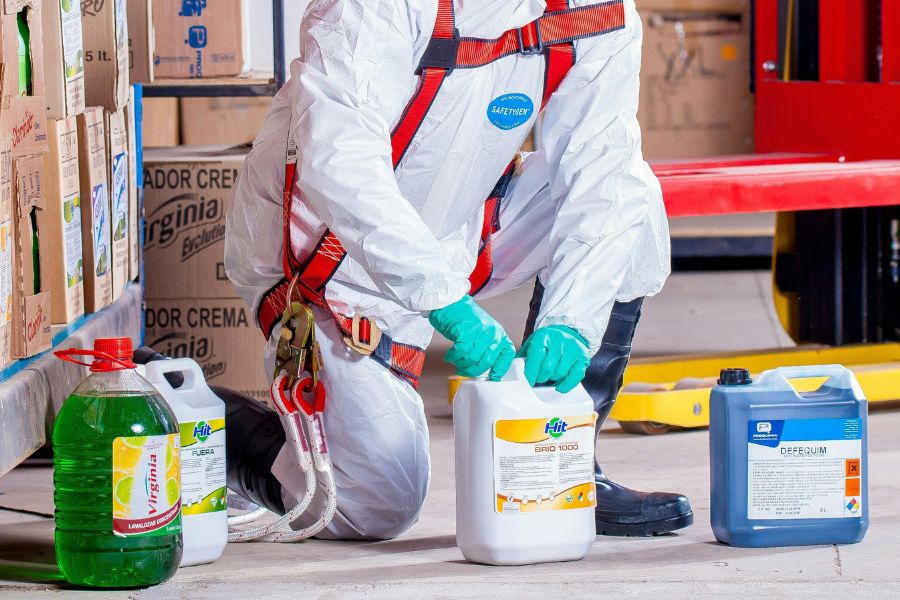5 Hazardous Material Packaging Alternatives
When it comes to transporting or storing hazardous materials, such as corrosive, flammable, or toxic substances, standard containers simply won’t do. These products require specialized hazardous material packaging designed to prevent leaks, resist corrosion, and ensure the safety of workers, handlers, and the environment.

Common Industries That Use Hazmat Packaging
Hazardous materials packaging, or hazmat packaging, is governed by strict regulations to safely contain and transport dangerous substances. Industries that frequently require hazmat containers include:
- Oil and gas
- Agriculture
Each of these industries handles materials with unique properties and risks, requiring specific packaging solutions to prevent contamination, exposure, leaks, or fire hazards.

5 Container Types for Hazardous Material Packaging
To meet both safety and regulatory requirements, here are five of the most widely used container types for hazardous material storage and shipping:
1. Steel Drums
Steel drums are a top choice for transporting flammable and corrosive chemicals. Known for their durability and corrosion resistance, these heavy-duty containers offer superior protection for highly toxic or reactive substances.
2. Plastic Drums
High-density polyethylene (HDPE) drums are strong and corrosion-resistant, making them an ideal choice for chemicals that don’t require metal containment. Plastic drums are versatile containers that are available in multiple sizes with tightly sealed lids and are commonly used for hazardous liquids, cleaning agents, and pharmaceuticals.
3. Fiber Drums
If sustainability is a priority and your materials are dry, fiber drums offer a biodegradable solution. Made from fiberboard or corrugated material, they’re lightweight, eco-friendly, and suitable for fine powders, regulated waste, and other non-liquid hazardous products.
4. Intermediate Bulk Containers
For high-volume storage, intermediate bulk containers, or IBC totes, are the go-to solution. With capacities up to 330 gallons and leak-proof designs, they’re ideal for transporting and storing large quantities of corrosive or caustic chemicals. Many IBCs also include spigots for easy dispensing.
5. UN-Rated Pails
Smaller volumes of hazardous materials can be safely stored in UN-rated pails. Available in both metal and plastic, these certified containers are suitable for flammable liquids, adhesives, and specialty chemicals.

How to Choose the Right Hazmat Container for Your Product
Selecting the appropriate container is crucial for both compliance and safety. Here’s a step-by-step guide to help you make the right choice:
Know Your Material’s Hazards
Understanding the properties of the material you’re handling is the first step. Ask yourself:
- Is it flammable? Use containers rated for volatile materials.
- Is it corrosive? Opt for corrosion-resistant materials like steel or HDPE.
- Is it toxic? Use airtight, sealed containers to prevent environmental exposure.
- Is it reactive? Store separately to avoid dangerous interactions.
Compare Container Materials and Their Benefits
Next, consider the container material; each material offers specific benefits:
- Steel – High durability, rust and corrosion resistance, ideal for flammable/corrosive substances.
- Plastic (HDPE) – Lightweight, corrosion-resistant, and cost-effective for many hazardous liquids.
- Fiber – Eco-conscious and best for dry, non-reactive materials.
- IBCs – Large capacity with added features like spigots; ideal for bulk storage.
Ensure Regulatory Compliance
Check your container’s certifications and ensure compliance with these regulatory agencies:
- UN (United Nations) – The UN has a rating system for the storage and handling of hazardous materials; packaging codes are assigned based on compatibility and hazard levels for global transportation.
- DOT (Department of Transportation) – The DOT sets U.S. standards for land, air, and rail shipment of hazardous goods.
- OSHA (Occupational Safety and Health Administration) – OSHA regulates safe handling and storage in the workplace.
Shipping and storage containers will have ratings from these organizations. You need to know the requirements for the type of product you’re handling and choose the right container. Always confirm the container’s rating matches your specific material class.
Storage and Transportation Considerations
Finally, consider the storage and transportation needs for the product. Whether you are planning for your warehouse space or ensuring hazardous products can be shipped appropriately, the container you choose impacts these decisions. Factor in logistical and environmental considerations such as:
- Temperature control – Some materials require consistent temperatures to stay stable.
Stackability – Can containers be safely stacked in your warehouse or truck? - Secondary containment – Especially important for highly caustic materials to prevent spills or leaks.
Consider hazardous materials when making inventory management plans or when choosing a warehouse for your storage needs.

Reusable vs. Single-Use Containers: Which One to Choose?
When storing hazardous materials, you must choose between single-use and reusable containers. Reusable containers often have a higher upfront cost, but you can use them multiple times to save money in the future and reduce your environmental impact. Single-use hazardous material containers can be recycled or thrown away after use, but this can have a higher environmental impact. You will also need to consider current hazardous materials regulations and other regulatory compliance issues when making this decision. Some materials are so dangerous that the containers that house them must also be disposed of to avoid exposure to toxins.
Labeling, Documentation, and Safety Precautions
Every hazardous material container must include proper hazard labels, handling instructions, and documentation. All hazardous materials need warning labels for their particular hazard on the outside of the container. If there are specific handling or transporting requirements, those must also be listed on the label. Safety protocols and proper documentation for these products are necessary to comply with international regulations for safety as well as OSHA workplace requirements.
Find the Perfect Hazmat Container With Paramount Global
Choosing the right container for hazardous materials is critical for maintaining safety, ensuring compliance, and keeping your operations running efficiently. Whether you’re handling flammable liquids, corrosive chemicals, or toxic substances, using certified, regulation-compliant packaging protects your team, your products, and the environment.
At Paramount Global, we make the process easy. By understanding your product’s properties and navigating material and regulatory requirements, our team helps you find the ideal packaging solution—quickly and confidently.
With full-service support including inventory management, warehousing, and supply chain solutions, we’re more than just a packaging provider—we’re your strategic partner.
Contact us today to request a quote, speak with a packaging specialist, or explore our catalog.
Want to learn more? Check out our guide to bulk product packaging for additional insights.
Hayley is a marketing professional and copywriter with a background in crafting content for a diverse range of industries. She has been writing about packaging and supply chain logistics for Paramount Global since 2022. She specializes in explaining complex topics in a clear and engaging way and is an advocate for sustainability in packaging and supply chain management.
Read More
For over forty years, Paramount has been delivering perfectly integrated packaging and supply chain solutions.
